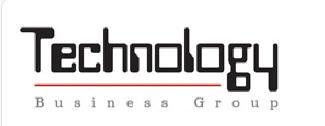........
VISUAL
BASIC 6.0 |
3 day class
Course description
Overview: Visual
Studio 6.0: Distributed Applications Design and Development
is a hands-on instruction book that will introduce you to
the learning objectives covered by Microsoft exam 70-176.
The course emphasizes the Distributed Component Object Model
(DCOM) as it is deployed through the Microsoft Transaction
Server (MTS).
Prerequisites: You
should have the following knowledge:
-
Distributed Applications Design and Development
-
Use an Internet browser such as Internet Explorer.
-
Work with a database (preferably SQL).
-
Use the Windows NT operating system.
Performanced-based objectives
-
Recognize how distributed applications address the
challenges of rapidly evolving business and computing
needs.
-
Describe design and development phases as they apply to
distributed applications.
-
Summarize the goals of the business, user, and technical
analysis, and list the participants' questions and other
research questions to address.
-
Analyze various architecture and implementation
methodologies and select the one best suited to your
application.
-
Describe the features of key Windows NT servers,
including Internet Information Server (IIS), Microsoft
Transaction Server (MTS), Microsoft SQL Server (MSQL),
and Microsoft Message Queue (MSMQ).
-
Define the benefits of using modeling to design a
complex application in an iterative fashion and describe
how Visual Modeler assists in the process.
-
Use entity-relationship modeling to create a logical
database design and describe how normalization affects a
database.
-
Integrate the logical design of a database into a
physical design and use Data View to review and use
database files.
-
Create COM modules and describe their features and
attributes, including the use of Global Unique
Identifiers (GUIDs).
-
Address design considerations in the business tier,
including state and scalability issues, and implement
the business tier using MTS.
-
Describe the features and benefits of the Microsoft
Message Queue Server and implement MSMQ for synchronous
and asynchronous processing.
-
Integrate presentation requirements with user interface
considerations into a presentation design and manage the
development team's interaction with the application
using Visual SourceSafe.
-
Determine the factors that need to be taken into account
when selecting the right technology for the development
of the presentation tier and recognize how various
Visual Studio tools (HTML, Active Server Pages, and so
forth) can be used to build the presentation tier.
-
Optimize and prepare your applications for deployment
using the Package and Deployment Wizard and maintain
them using the System Management Server (SMS).
Course Outline
Lesson 1: Introduction
to Distributed Applications
-
Understanding the Rapidly Changing World of Business
Computing
-
Understanding How Applications Have Evolved
-
Addressing Efficiency, Reliability, and Scalability
-
Challenges of Distributed Applications
-
Key Features of Distributed Systems
-
ESWAP
Lesson 2: Applying
Design Concepts
-
Introduction to the Development Process
-
Designing in Phases
-
Applying Design Techniques
Lesson 3: Analyzing
Business Requirements
-
Examining the Business Environment
-
Evaluating Customer Requirements
-
Assessing Technical Constraints
-
Analysis Problems
Lesson 4: Evaluating
Application Architecture
-
Identifying Architecture
-
Implementing the Business Logic
-
Establishing the Data Services Layer
Lesson 5: Using
Essential Windows Platform Services
-
Windows NT Platform Services
-
Using the Component Object Model (COM)
-
Using the Microsoft Internet Information Server (IIS)
-
Using Microsoft Message Queuing (MSMQ)
-
Using the Microsoft SQL Server
Lesson 6: Creating
a Solution Design
-
Identifying Technical Requirements
-
Understanding Application Modeling
-
Microsoft Visual Modeler
-
Applying Visual Modeler to the ESWAP
Lesson 7: The
Logical Design of the Database
-
Developing a Logical Data Model
-
Data Normalization
Lesson 8: The
Physical Design of the Database
-
Physical Database Design
-
Using Visual Database Design Tools
Lesson 9: Building
Components for Distributed Applications
-
COM Concepts
-
Applying MTS to Distributed Applications
-
Building Components for MTS
-
Deploying MTS Components
Lesson 10: Solving
Network Problems Using Microsoft Message Queue Server (MSMQ)
-
What Are MOMs and Why Do MSMQs Need Them?
-
Synchronous Communication
-
Understanding the MSMQ Server
Lesson 11: Presentation
Design
-
Presentation Considerations
-
Visual SourceSafe and Change Management
Lesson 12: The
Presentation Tier Implementation
-
Selecting a Presentation Tier Technology
-
Implementing the Presentation Tier
Lesson 13: Optimization,
Deployment, and Maintenance
-
Optimization and Performance Monitoring
-
Preparing and Distributing a Desktop Application
-
Preparing and Distributing a Web-based Application
-
Applying Maintenance Concepts
|

